An oft over-looked special administrative region of the Republic of China, the Macau Peninsula holds a culture as tropical as its southern climate; an eclectic fusion of Portuguese architecture and a distinctively Chinese lifestyle, with all the verve of an administrative region that is finding its own path.
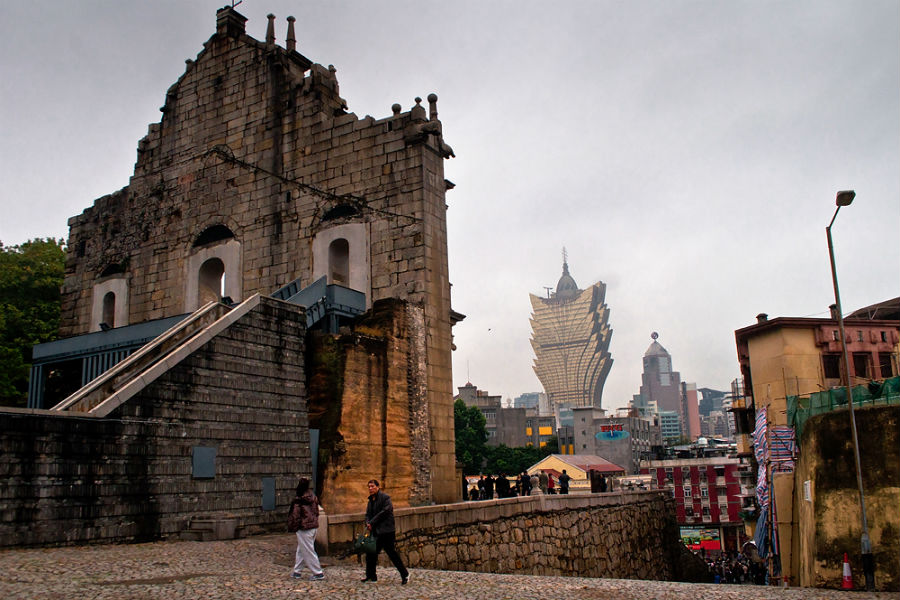
A stark contrast between historic and modern Macau (Photo: Christian Junker via Flickr)
Hanging onto the edge of southern coast of mainland China is the Macau Peninsula. This Special Administrative Region of China has a stark contrast between low-lying grey buildings and gold-plated, shiny casino hotels. It feels a little bizarre to walk between small Chinese streets where normal daily life takes place, to then turn a corner into a synthesized sense of European luxury. But behind the front remains a core culture of Macau, discoverable by those who take the time to seek it.
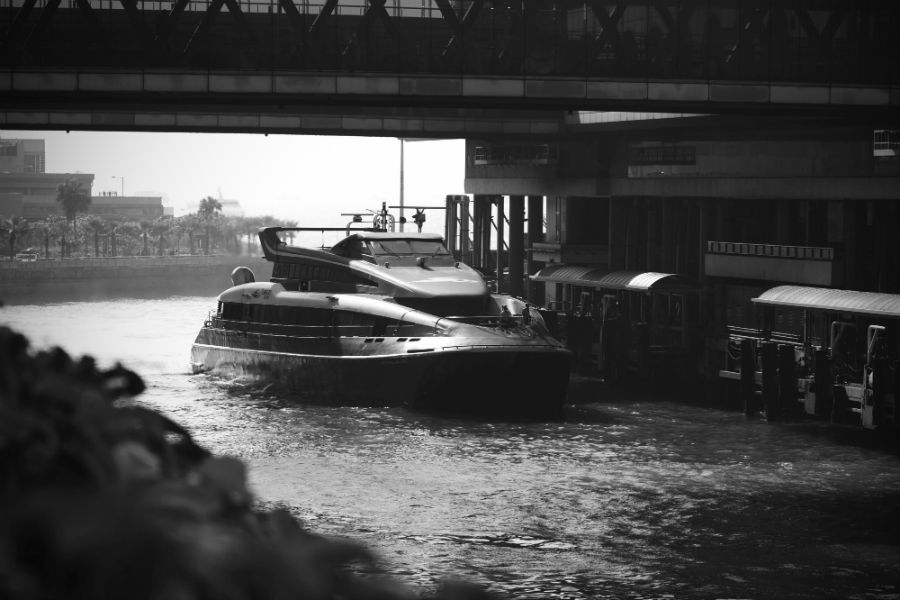
The Macau ferry (Photo: Elvis in China via Flickr)
The southern coast of China has long been a prime station of international maritime trade in Asia. The stretching shoreline provides accessible ports for ships trading between the East and the West. As early as the 1500s, at a time when many western countries were trying to expand their empires and take land in the area, the region now known as Macau was leased to Portugal peacefully through a rental agreement.
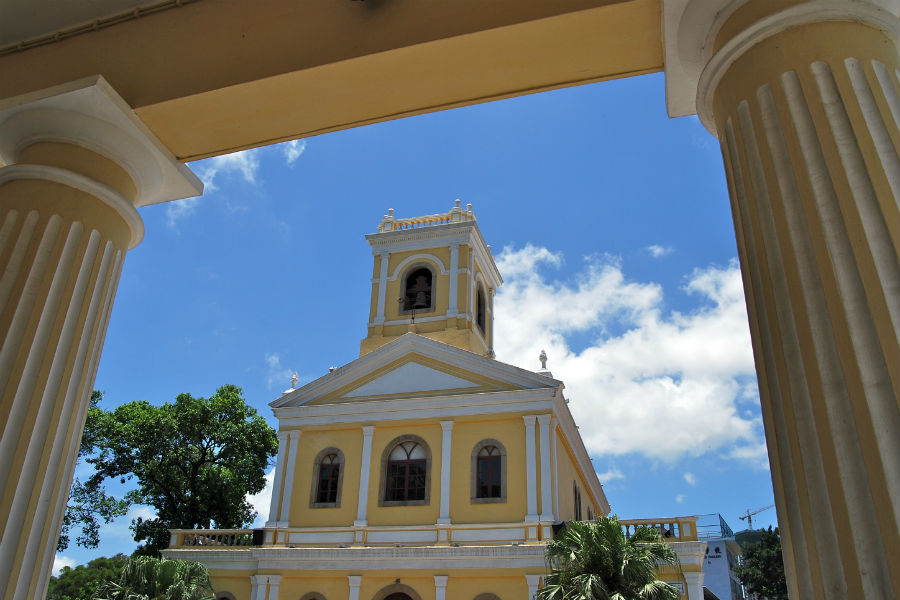
The remaining Portuguese architecture (Photo: Elmer Anthony via Flickr)
Through this period of Portuguese administration, Catholic missionaries took the opportunity to attempt to inject their religion into the East. This led to many Catholic churches being built in Macau, many of which remain in strong holding with UNESCO heritage status, and can still be visited by tourists today.
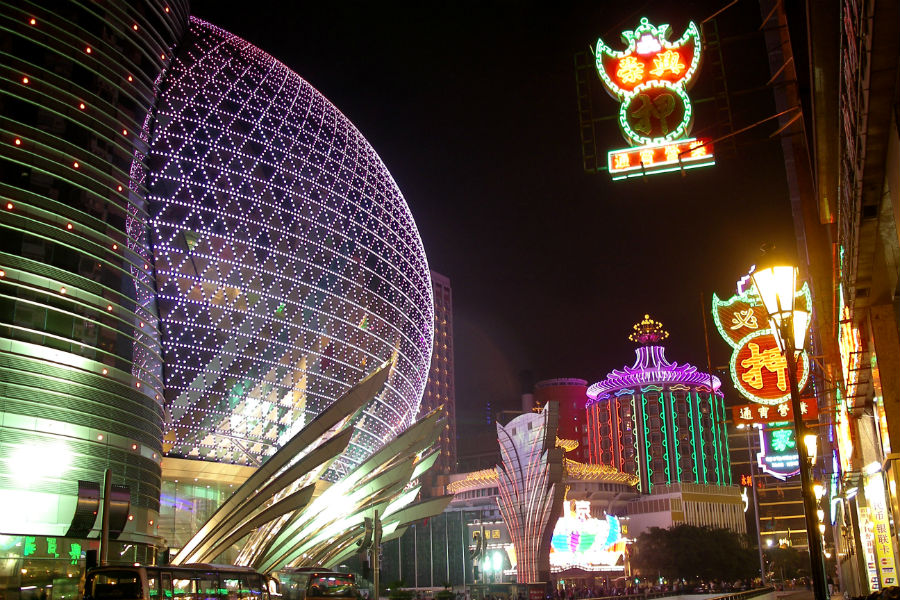
The bright casino lights of Macau (Photo: Magalie L’Abbe via Flickr)
Macau was officially returned to Chinese sovereignty in 1999, making it the both the earliest and most recent European colony in Asia. The return to China, however, was not without its issues. During the struggle for ownership, a number of casinos were controversially opened in Macau, and it was quickly realised that gambling – illegal in mainland China but legal by Portuguese legislation – could continue to make the region money after the decline of maritime trading.
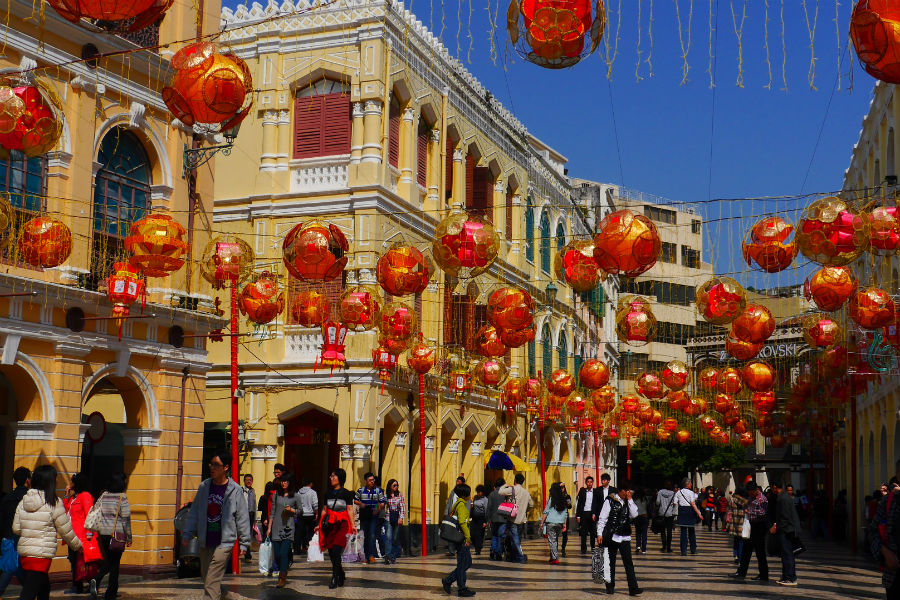
Contrasting oriental lanterns against a European backdrop (Photo: Travel Oriented via Flickr)
The money quickly began to flow in from parts of Asia where gambling was illegal or restricted. The idea was capitalised on, giving Macau its title of ‘The Vegas of Asia’, and now brings in the majority of its tourism. Despite being the most densely populated area of the region, the Macau Peninsula has somewhat of a calmer feel to it. With most of the busier casinos and tourist hotspots tucked away just across the harbour in the Cotai and Taipa districts, the peninsula is left more space for authentic local food joints and cultural hubs.
Hotels
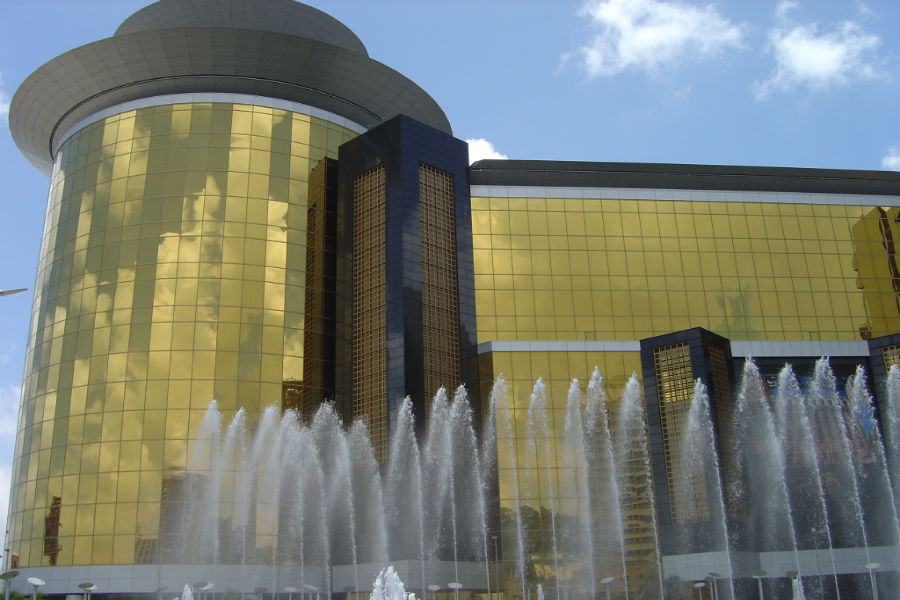
The gold-plated Sands Casino (Photo: AsianFC via Flickr)
A classic example of a Las Vegas style Macau casino, the Hotel Sands (No. 203 Largo de Monte Carlo) does not skimp on the lavish. Whether it’s the steak restaurant, the casino or the spa you’re checking into, the interior is decked out in gold plating and marble design with luxurious oriental touches, including dark wood columns and deep red plush cushioned furniture. The casino here is one of the biggest and most popular on the peninsula side of Macau, keeping the midnight casino buzz alive throughout most of the day.
To escape the casino scene whilst retaining some of the city’s nightlife buzz, the mid-range Hotel Guia (1-5 Estrada Do Engenheiro Trigo) has an underground nightclub instead of a casino to keep guests entertained through the night. Though a little lacking in facilities, the rooms are decent value for money, and the location in the ancient district makes it an ideal stay for sightseeing.
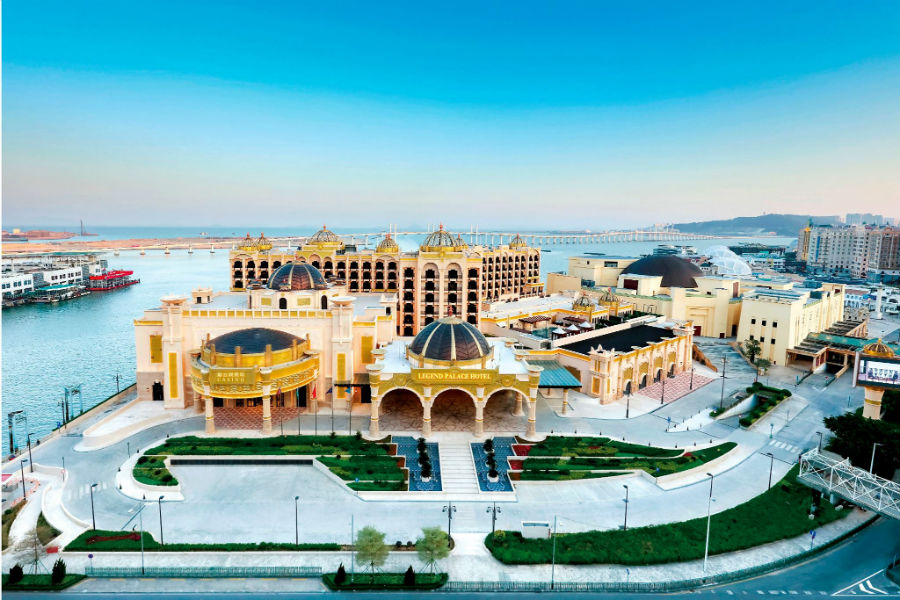
The Legend Palace Hotel (Photo: Legend Palace Hotel)
Another extravagant find is the Legend Palace Hotel (1315-1339 Avenida da Amizade). Looking like a Portuguese palace inside and out, this hotel makes the most out of its ocean views by including floor to ceiling windows and jacquard printed royal blues and gold hues wherever possible. The high ceilings and regal domed roofs give the hotel the feeling of a real palace and the variety of activities inside the hotel ensure guests won’t run out of things to do, including its own bustling, opulent casino and luxurious spa.
Macau isn’t all about the nightlife, and its southern island climate makes for some beautiful landscapes. Hidden behind a grove of trees and located a short drive away from the casino district, the quieter Grand Lapa (956-1110 Avenida Da Amizade) offers clean and modern business-style rooms with ocean views and plenty of relaxation facilities for a city escape. Guests can take some time out from the hustle and bustle at the outdoor family-friendly pool area and the terraced breakfast restaurant, both shrouded in greenery, to experience Macau’s sub-tropical climate.
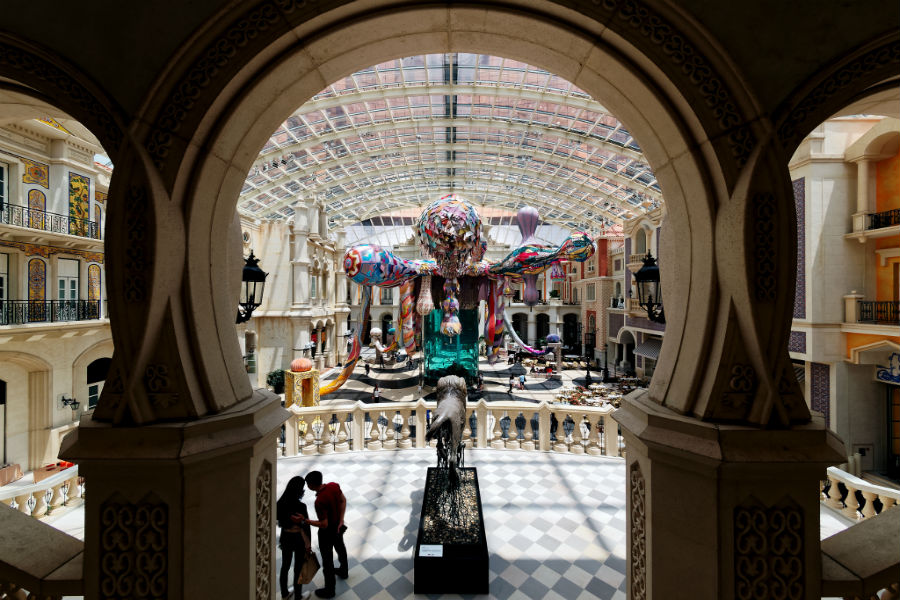
The decadent MGM Grand Casino Hotel (Photo: Melv L. via Flickr)
It’s a little hard to distinguish the MGM Grand Casino Hotel (Avenida Dr. Sun Yat Sen Nape) from an adult theme park. The building stands as three phases of shimmering bronze, silver and gold, and not an inch of the place lacks extravagant adornments. The first phase of the hotel is a public gallery divided into four wings of North, South, East and West. Here, there is a large variety of restaurants of both Chinese and European cuisine, meeting and banquet rooms, art galleries, an aquarium and even its own theatre which regularly hosts celebrity concerts and Broadway shows. The second and third phases are limited to hotel guests, where they are able to access their private rooms and the rooftop infinity pool.
For those seeking little more than a bed for the night, Villa Hou Va (1/F, No.86 Rua Da Ribeira Do Patane) provides clean budget rooms in a local walk-up building with a simple check-in and check-out process, leaving more time to enjoy what the real streets of Macau have to offer.
Dining
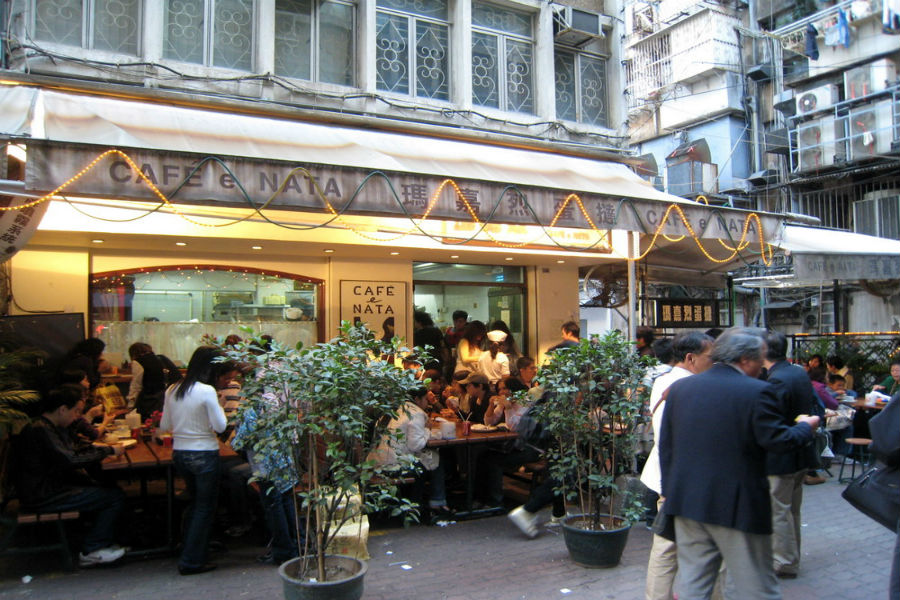
A European vibe at Margaret’s Café e Nata (Photo: Krista via Flickr)
Most stop-overs in Macau are short, but one thing that demands time for sampling is their signature egg tarts. Glazed and burnt over like a crème brulee, Macau’s egg tarts have a thin, crispy layer on the outside with a thick, gooey egg custard waiting to ooze out upon the first bite. Local café Margaret’s Café e Nata (17B Goldlion building, Rua do Comandante Mata e Oliveira) is the perfect place to sample these, along with some of Macau’s other Portuguese fusion pastries.
Although visitors won’t be far from the dim sum centrals of Hong Kong and Guangdong, Macau’s locals serve up their own take on the meal at Tou Tou Koi (6-8 Travessa do Mastro), and it’s worth the visit to explore how different regions of Southern China prepare their dim sum dishes differently. Macau’s dim sum highlights are dumplings with fresh seafood, sourced from their shoreline location, and crispy pastries refined by Portuguese patisserie influences.
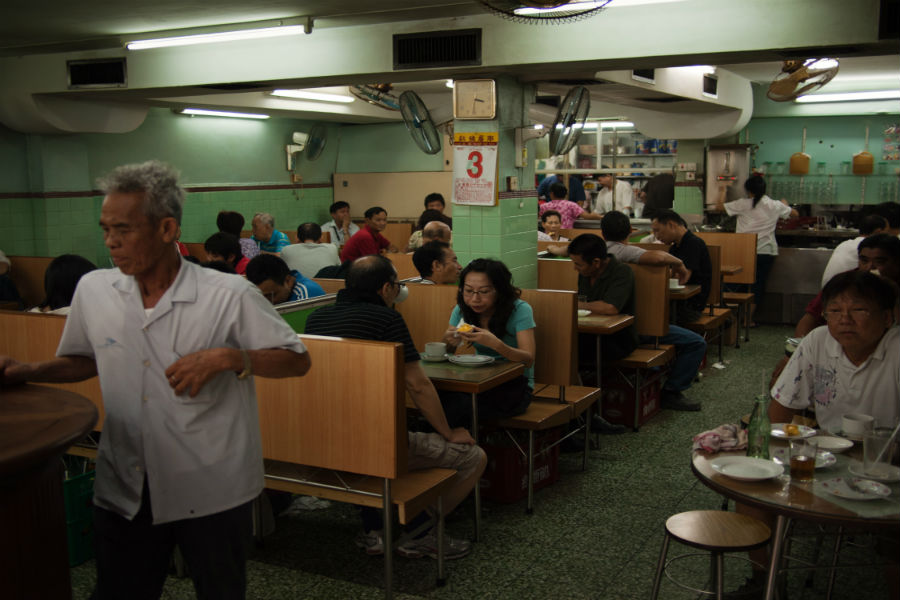
Inside the Nam Peng Café (Photo: Stephan via Flickr)
A quick, in-and-out style of dining for the busy traveller can be found at Nam Peng Café (85-85A Rua de Cinco de Outubro), where fast-food style dim sum, as well as oily ramen and Chinese roasted meat sandwiches, can be picked up and enjoyed for an easy meal on the go at any time of the day.
To taste some of Macau’s colonial history, Dom Galo Portuguese Restaurant (32 Avenida Sir Anders Ljungstedt) serves up traditional Portuguese plates, with a big Macanese emphasis on seafood dishes, where the menu includes a wide variety of seafood paellas and oyster dishes. With the walls painted bright yellows and blues, and the authenticity of the food on the table, it’s easy to forget which continent you’re dining in.
Culture and History
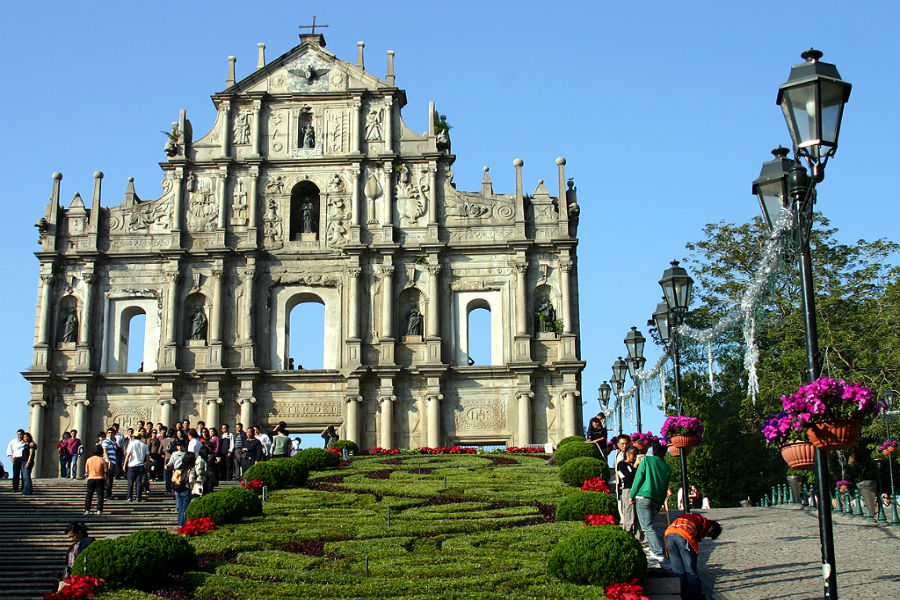
The Ruins of St. Paul’s Cathedral (Photo: Christian Junker via Flickr)
The most popular sightseeing spot in Macau is the Ruins of St. Paul’s Cathedral (Rua de Sao Paulo), and upon arrival, it’s not hard to see why. The magnificent archway that once stood as the cathedral entrance sits at the top of a hill like an ancient gateway to Macau, its bricks stained with the patina of the region’s secrets and history.
To stop for a tea break with a slice of education on the side, the Macau Tea Culture Museum (Lou Lim Ieoc Garden, Avenida do Conselheiro Ferreira de Almeida) offers free admission and often holds tea ceremonies, where Macau’s history of tea is told and local brews can be sampled. The architecture is also a unique marvel, where the exterior could be mistaken for a European villa, yet the interior is very typical of a Chinese tea house.
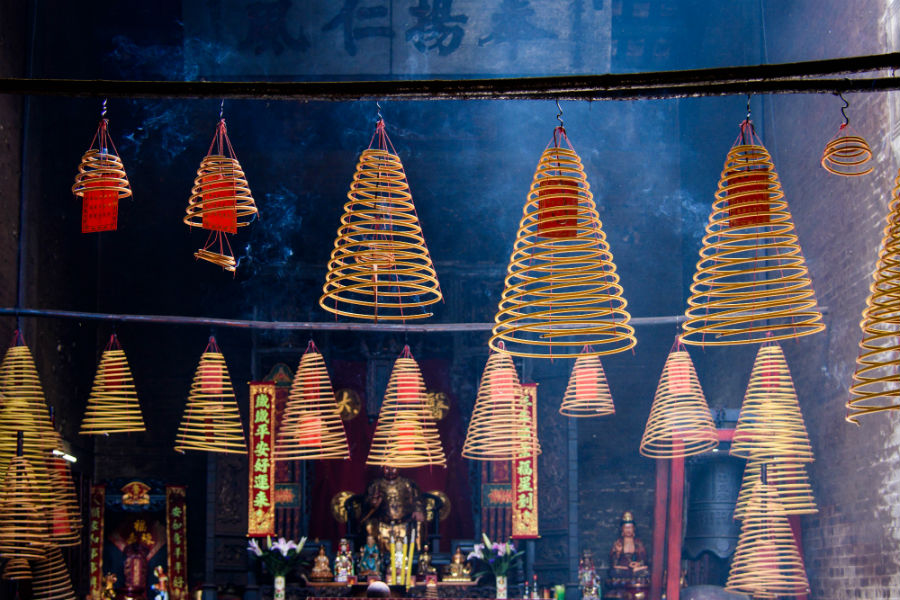
Contrasting reds at the Lin Kai Temple (Photo: Hope via Flickr)
A smaller find whilst exploring the streets of Macau, the Lin Kai Temple (No.21-35 Travessa da Corda) sits modestly in against grey residential buildings and can be found by following the strong scents of burning incense. Despite the temple being small, the Lin Kai Temple is a big tourist attraction because of its normality, and the stark reds of the Buddhist symbolism create an artistic contrast to its plain location.
Built by the Portuguese on the highest point of Macau, the Fortress of Guia Lighthouse (Guia Hill) stood as a look-out point when other European regions sought to overthrow the Portuguese stronghold. The white and yellow lighthouse now stands as a beautiful UNESCO heritage site next to the Guia Chapel, which is also open for viewing.
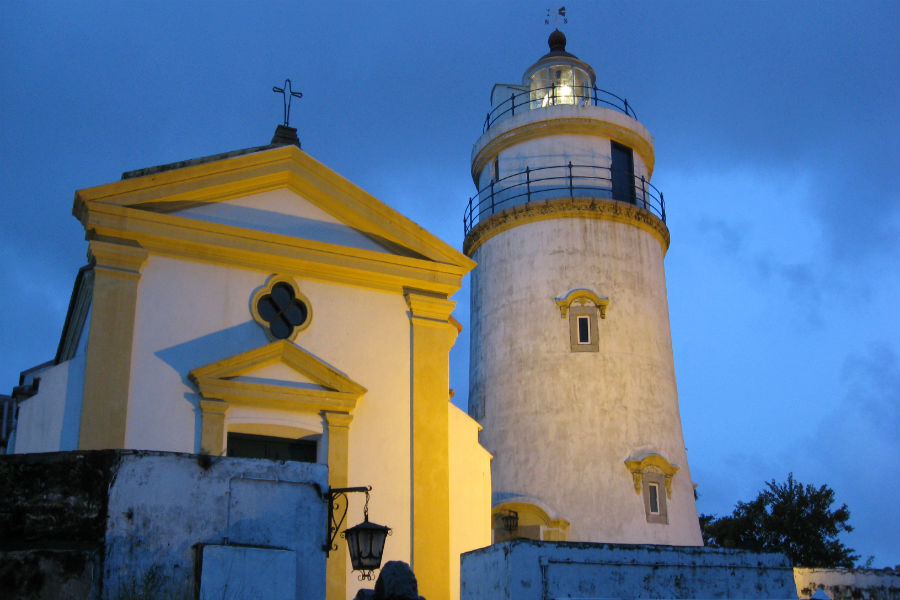
The Fortress of Guia Lighthouse (Photo: Taylor and Ayumi via Flickr)
Shopping
Those seeking to make the most out of Macau’s cultural blend can find their take-homes at The Portuguese Corner Shop (8 Calcada da Igreja de Sao Lazaro). Unlike the modern-day corner shop: this little store houses eclectic collections of traditional home-made jams, European healthcare imports and Portuguese cooking essentials. The soap collections here are also quite unusual, with scents including tobacco blossom and spring lettuce.
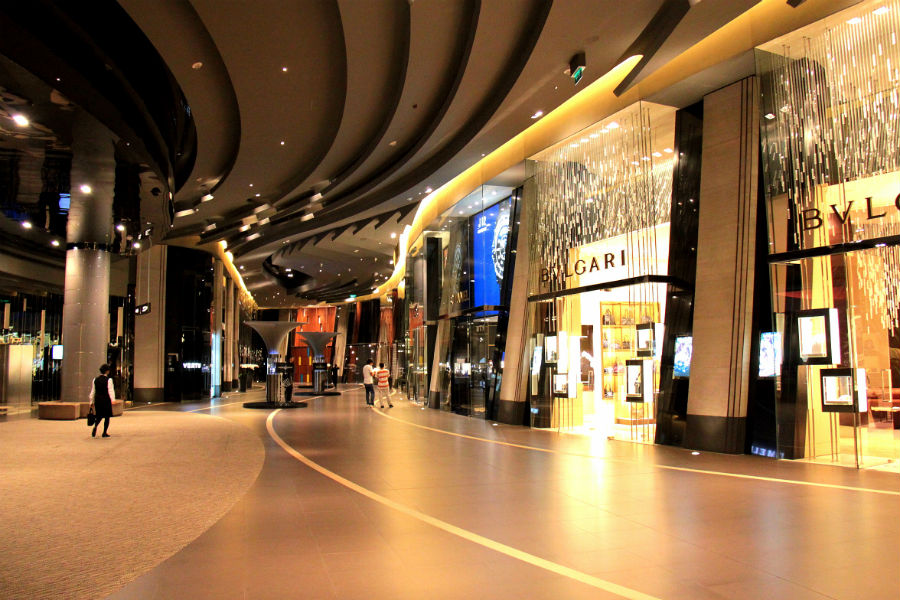
Extravagant designer stores in Macau (Photo: Wylie Poon via Flickr)
Gamblers come to Macau to spend big money at the casinos through the night, and on designer goods at One Central Macau (Avenida de Sagres) the next day. Hosting designer brands from Dior to Luis Vuitton, the decadent mall also has a variety of upscale restaurants and bars with extravagance coming from the attention to the finer details, including the crystal champagne flutes.
For smaller spends, local stores can be found in the floors of high street retailer Macao Ginza Plaza (1-15 Rua de Pedro Nolasco da Silva). Here, there are plenty of one-of-a-kind clothing boutiques, tea emporiums, small bakeries with packaged sweet treats, and Chinese medicine stores selling herbal remedies to the smallest of ailments.
Book lovers and linguistics enthusiasts can lose themselves for hours in Livraria (16-18 Rua de S. Domingos). This vibrant Portuguese book shop sells everything from fictional classics to travelogues in languages including, and certainly not limited to, Portuguese, Spanish, Chinese, English and French. The store holds a quirky initiative through its doors known as ‘Blind Date with a Book’. The owner’s top picks are wrapped up in brown paper so customers truly don’t judge a book by its cover, and make their choice based on the comments written on the packages.
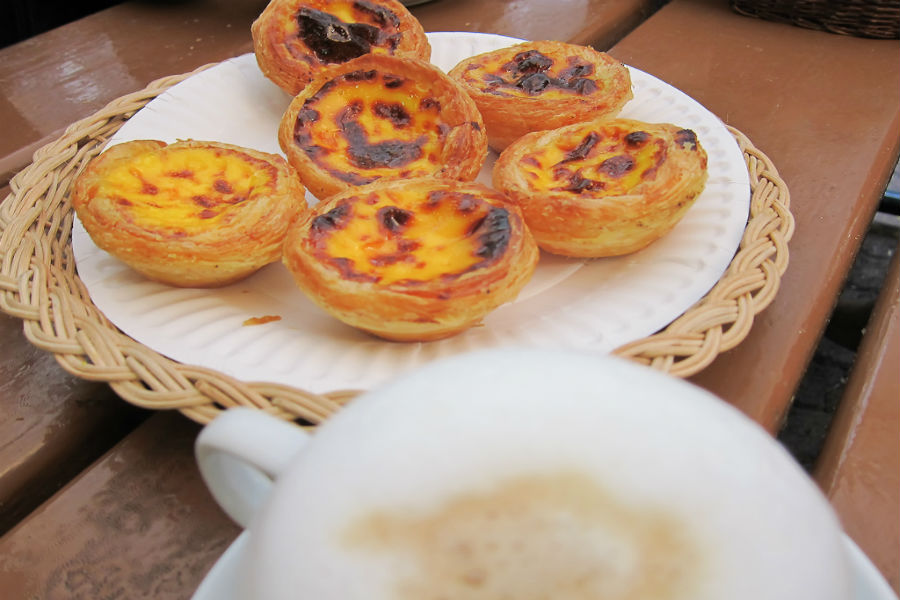
The famous egg tarts at Margaret’s Café e Nata (Photo: Leo via Flickr)